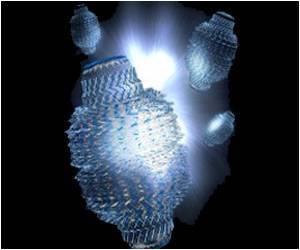Nanoparticles engineered by researchers have expressed immense promise for the treatment of multiple myeloma (MM), a fatal cancer of the plasma cells in bone marrow.

"The nanoparticles we have designed accomplish many things at once," Basar Bilgicer, assistant professor of chemical and biomolecular engineering and chemistry and biochemistry, and an investigator in Notre Dame's Advanced Diagnostics and Therapeutics (AD and T) initiative, said.
"First, they reduce the development of resistance to doxorubicin. Second, they actually get the cancer cells to actively consume the drug-loaded nanoparticles. Third, they reduce the toxic effect the drug has on healthy organs," Bilgicer said.
The nanoparticles are coated with a special peptide that targets a specific receptor on the outside of multiple myeloma cells. These receptors cause the cells to adhere to bone marrow tissue and turn on the drug resistance mechanisms.
But through the use of the newly developed peptide, the nanoparticles are able to bind to the receptors instead and prevent the cancer cells from adhering to the bone marrow in the first place.
The particles also carry the chemotherapeutic drug with them. When a particle attaches itself to an MM cell, the cell rapidly takes up the nanoparticle, and only then is the drug released, causing the DNA of cancer cell to break apart and the cell to die.
Advertisement
"We believe further research will show that the heart is less affected as well. This could greatly reduce the harmful side-effects of this chemotherapy," Kiziltepe said.
Advertisement
"There was some complex bioengineering involved in developing the particles. We were able to precisely control the number of drug and targeting elements on each nanoparticle, achieve homogeneous nanoparticle size distribution and eliminate the batch-to-batch variability in particle production," Ashley added.
The research is published in Nature's Blood Cancer Journal.
Source-ANI















